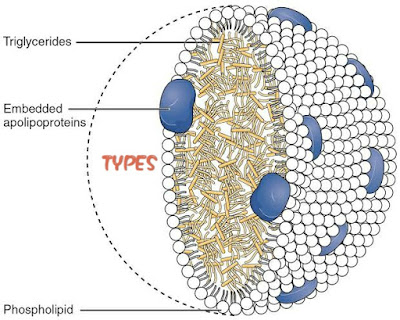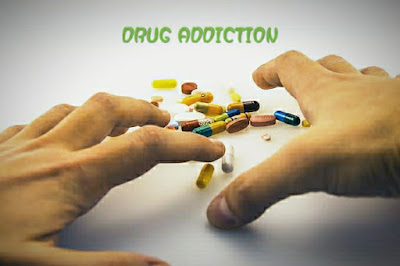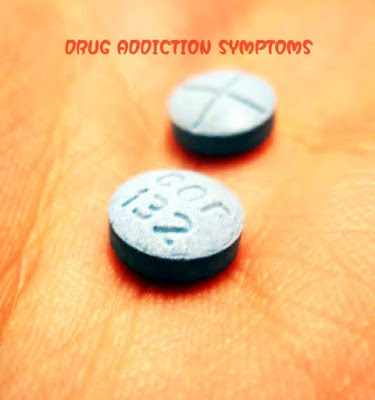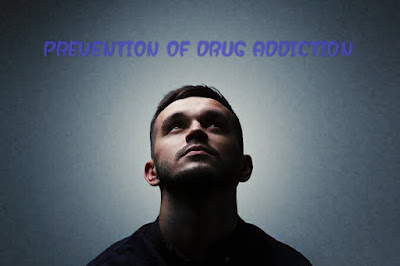CHOLESTEROL
HELLO FRIENDS,
Today's topic of our discussion is cholesterol which is the main reason to being a unfit human body.
About:
Cholesterol
Cholesterol-IUPAC Name (3 β) - Cholesterol- 5- N- 3- Olean Name (10R, 13R) - 10, 13- Dimethyl- 17- (6- Methylheptane- 2- yl) - 2, 3, 4, 7, 8, 9, 11, 12, 14, 15, 16, 17- Dodecahydro-1H- Cyclopenta [a] Finantha- 3- Olaphachan Identifiers.A.S Number [57-88-5] [CAS] PubCam 5997 SMILES
CamSpiderID5775 Properties Acromatic Formula C27H46O Molar mass 37.65 g / mol. White crystalline powder [1] Melting point
14 - 150 ° C [1]
Boiling point
360 ° C
Solubility in water is 0.095 mg / l. (30 ° C) Except where given,
These figures are according to the standard state of the substance (25 ° C, 100 kpa ).
Enlightenment reference
Microscopic Visions of Cholesterol Crystals, in Water.
Photographs are taken in lighted light.
Cholesterol or cholecystitis is a wax-like substance, which originates from the liver.
It is found in every part of the body, including the cell membranes of all animals and humans.
Cholesterol is an important part of the cell membrane, where it is needed to establish the appropriate amount of permeability and fluidity.
Cholesterol produces vitamin D, hormones and bile in the body, which helps digest fats found inside the body.
Cholesterol in the body is also reached in food through non-vegetarian diet ie eggs, meat, fish and dairy products are its major sources.
Cholesterol is not found in grains, fruits and vegetables. About 25 percent of the cholesterol in the body is produced through the liver.
The word cholesterol is derived from the Greek words kole and stearose (solid) and has the chemical suffix ol.
François Pulitier de la Salle identified it as solid in Galvestan in 1889.
Cholestrine was named by chemist Eugene Churvel in 1815.
The human body needs cholesterol primarily for the formation of cells, for the production of hormones, and for the production of bile juice, which aids digestion of fat;
According to Dr. Gang Hu, head researcher at the National Public Health Institute in Helsinki, the capital of Finland, high cholesterol increases the likelihood of Parkinson's disease.
Type
Cholesterol is not soluble in blood. It is transported to and from cells by carriers called lipoproteins.
Low-density lipoprotein, or LDL, is known as bad cholesterol.
High-density lipoprotein, or HDL, is known as good cholesterol.
These two types of lipids, along with triglycerides and Lp (a) cholesterol, make up the amount of total cholesterol, which can be determined by blood tests.
Cholesterol is mainly of three types.
LDL
Low density cholesterol
Low-density lipoprotein (low density lipoproteins) is considered the most harmful cholesterol.
It is produced by the liver, which transports fat from the liver to other parts of the body muscles, tissues, senses and the heart.
It is very important that LDL cholesterol remains low, as it shows that the amount of cholesterol in the bloodstream has exceeded the requirement.
In this case, it starts to freeze on the walls of the blood vessel and sometimes the pores of the tube close.
As a result, the likelihood of heart attack increases.
According to the National Cholesterol Control Program, LDL cholesterol levels in the body should be less than 100 ml / dL.
If LDL (bad) cholesterol is excessive, it gradually accumulates in the inner walls of the arteries that carry blood to the heart and brain.
If a clot obstructs a severely narrowed artery, it may result in a heart attack or stroke.
HDL
High Density Cholesterol
High density lipoproteins (high density lipoproteins) are considered good cholesterol.
It is also produced by the liver itself, which transmits cholesterol and bile back to the liver after being recycled from tissues and senses. is. Excess of HDL cholesterol is a good sign, as it shows the heart to be healthy.
According to the National Cholesterol Control Program, the level of HDL cholesterol in the body does not exceed 40 ml / dL.
Should be Good cholesterol foods include fish oil, soybean products, and green leafy vegetables.
Do aerobic exercise (walking, running, stair climbing, etc.) for five days a week, and for about 30 minutes each time, so HDL can be increased by 5 percent in just two months.
By reducing or stopping smoking, HDL can increase by 10 percent.
Losing weight is also another way to increase good cholesterol.
After every six pounds of body weight, good cholesterol in the body is 1 ml / dc. Can increase from.
VLLD
Extremely low density cholesterol
High density lipoprotein (very low density lipoproteins) carries cholesterol from the liver to the tissues and senses in the body.
VLDL cholesterol is more harmful than LDL cholesterol. It causes heart diseases.
Growth factors
The amount of cholesterol in the food items (per 100 grams) Name of Cholesterol Raw 70 mg 9 Pig fat 95 mg 10 Cheddar 100 mg 11 Kantz cream 15 mg 12 Cream 120 mg 140 to 13 mg 13 Liver raw 300-425 mg 14 Lobster 200 mg 15 Margarine 65 mg 16 Total Milk (liquid) 11 mg Ra.
17 milk (dry) 85 mg. 18 skim milk (liquid) 3 mg.
19 lamb meat 65 mg.
20 pork 70 mg.
21 shrimp 125 mg.
22 cheese spread 65 mg.
23 chicken (raw ) 60 mg 24 crab 1125 mg 25 egg (whole) 550 mg 26 egg yolk 1500 to 2000 mg
Under normal circumstances, hepatic cholesterol maintains a balance between the excretion and the solution, but this equilibrium is sometimes disturbed.
There are a couple of reasons for this.
This balance deteriorates when:
High fat foods
Increased body weight
Carelessness in eating
Lack of regular exercise
There is also a genetic cause. It has been observed that if there is a complaint of high cholesterol in the people of a family, then it is feared to be high in the next generation as well.
In many people, cholesterol in the body is also seen to increase with age.
Growth Symptoms
cholesterol can be experienced on its own.
Understand this increase when-
Breathing starts on walking.
You have started having high blood pressure.
Diabetic patients, their blood gets thick due to high sugar level.
You have started having pain in the legs. Cholesterol can rise due to no other reason.
testing
lipid profile
Under lipid profile tests, total cholesterol, high density cholesterol (high density liquid cholesterol), low density cholesterol, ultra low density cholesterol and tri glyceride are tested.
These checks should be done regularly every year.
If there is a family history of hypertension, it should be done quickly after the age of forty five.
Cholesterol balance
Can not see the cholesterol in the body itself, only can experience it.
When its quantity increases, the chances of heart attack and other heart related diseases are increased.
Generally, after age of 65 years for men and 55 years for women, heart related diseases are more likely.
But it is also not that you cannot balance the amount of cholesterol in your body.
For this, a little change in your lifestyle has to be done.
If the weight is more, then you should try to reduce it.
Choose dishes with low cholesterol in the diet.
Avoid prepared food and fast food. Fried things, do not eat too much chocolate.
Include fibrous ingredients in food. These are helpful in keeping cholesterol balanced.
Exercising regularly does not increase the amount of cholesterol in the body. Apart from this, yogasanas are also helpful.
Pranayama has proved to be very helpful in reducing cholesterol. Smoking increases cholesterol.
Dental treatment of cholesterol is also possible.
Many types of treatment are possible for people suffering from high cholesterol, but controlling it from the beginning is the best solution.
In allopathy, statins are prescribed to lower cholesterol.
Cholesterol in homeopathy is called hyperlipidemia.
There are some medicines available for control only, while in Ayurvedic medicine, decoction of the powder of Arogyavardhini, Punarnava Mandoor, Triphala, Chandraprabha Vati and Arjuna's bark is very beneficial.
Other controller
Recent studies have shown that green and black tea are effective in reducing cholesterol levels.
People who drink more tea also have lower cholesterol and other health problems.
Cholesterol is reduced significantly in green and black tea which are naturally blended with some chemicals.
For this, green tea alone is not enough, but if low-fat diet is also taken along with it, then the risk of heart attack can be reduced by 16–24 percent.
According to Professor Roger Korder a glass of red wine should be included in his daily lifestyle.
It contains a chemical called prosaidins which is healthy, it is also found in dark chocolate.
It improves blood vessel function, reduces the level of artery-clogging LDL cholesterol, and increases the level of healthy HDL cholesterol for the heart.
Fish oil is also very helpful in controlling bad cholesterol.
Folic acid capsules are also beneficial.
Cholesterol is a wax or fat-like substance produced by the liver.
It is important for cell membrane, vitamin D, digestion and formation of certain hormones.
Cholesterol does not dissolve in water, so it cannot reach other parts of the body on its own.
Particles called lipoproteins help cholesterol to reach other parts of the body through the bloodstream.
There are two main forms of lipoproteins -
Low-density lipoprotein also known as "bad cholesterol", can accumulate in the arteries and cause serious health problems such as heart attack or stroke.
High-density lipoprotein sometimes referred to as "good cholesterol", helps to return LDL cholesterol to the liver to be removed.
What is high cholesterol?
Consuming foods that contain high amounts of fat increases the level of LDL cholesterol in your blood.
This is called high cholesterol, hypercholesterolemia, or hyperlipidemia.
When the LDL cholesterol level is too high or the HDL cholesterol level is too low, the coagulation of fat in the blood vessels begins.
This coagulation makes it difficult for adequate blood flow through your arteries.
This can cause problems in your body, especially in your heart and brain and can also be fatal.
People of all ages and backgrounds may have high cholesterol.
High cholesterol is one of the risk factors that can cause heart attack, stroke, atherosclerosis, and peripheral artery disease.
Current status of high cholesterol in India
Population-based studies in India have shown increasing total cholesterol levels.
Recent studies have shown that high cholesterol is present in 25–30% of the city and 15–20% of the rural population.
However this level is lower than in high income countries.
Symptoms of High Cholesterol - High Cholesterol Symptoms
High cholesterol is a risk factor for other diseases and does not itself have any symptoms.
However, regular blood tests can detect increased levels of cholesterol in the blood.
All people 20 years of age or older should have their blood cholesterol level checked at least once every 5 years.
To measure cholesterol level, it is best to have a blood test called lipoprotein profile.
Your doctor may ask you to have a frequent cholesterol test if you have a family history of high cholesterol or if you experience the following risk factors -
Having high blood pressure.
Weight gain
Or if you smoke.
Causes of High Cholesterol - High Cholesterol Causes
High cholesterol levels can be caused by the following reasons -
Diet -
Eating too much saturated fat, trans fat and cholesterol can cause high cholesterol.
Saturated fat and cholesterol are in animal products such as meats, milk, eggs, butter, and cheese.
Trans fat is found in fried foods and packaged foods such as biscuits and chips.
Weight -
Being overweight can increase triglycerides and also increase LDL (bad cholesterol).
Activity -
Lack of physical activity can increase LDL (bad cholesterol).
Age and gender
Your cholesterol starts increasing naturally after the age of 20 years.
In men, cholesterol levels are generally lower after the age of 50, while in women, it remains significantly lower until menopause.
Then it increases to the level of men.
Some diseases -
Some diseases can increase the risk of high cholesterol such as hypothyroidism, long-lasting kidney disease and some types of liver diseases.
Family history -
You may also have it if your family members have or had high cholesterol.
Smoking -
Smoking can increase LDL (bad cholesterol).
Some medicines -
Some medicines can also increase the level of LDL (bad cholesterol).
These drugs include thiazide diuretics, beta-blockers, estrogen, and corticosteroids.
Prevention of High Cholesterol -
Adopting a healthy lifestyle, including aerobic exercise and a low-fat diet, can reduce the risk of obesity and high cholesterol, reducing the risk of heart disease.
Knowing your cholesterol is the first step in controlling your other levels.
Set dietary goals to prevent high cholesterol -
Try to take less than 7% calories and less than 200 mg cholesterol by saturated fat (fat) in daily intake.
You can take up to 30% of calories from total fat but most of it should be from unsaturated fat (fat), which does not increase cholesterol levels.
Eat more soluble fiber (found in grains, beans, peas, and many fruits and vegetables) to boost your LDL level lowering power.
To know what is in your food, read the nutrition label in it.
Buy only foods with low saturated fat (fat) and cholesterol.
Reduce excess weight and maintain healthy weight.
Quit smoking
Exercise on most days of the week for at least 30 minutes.
If you drink alcohol, drink it in moderation.
Diagnosis of high cholesterol -
A blood test is called a lipid panel or lipid profile to check cholesterol levels. This test reports the following:
total cholesterol
Low Density Lipoprotein (LDL: Low-density lipoproteins)
High Density Lipoprotein (HDL: High-density lipoproteins)
Triglyceride - a type of fat in the blood
For the most accurate test, do not eat or drink anything other than water nine to 12 hours before taking blood samples.
The correct level of cholesterol is stated above.
High Cholesterol Treatment - High Cholesterol Treatment
Treatment of high cholesterol aims to reduce the likelihood of heart attack or stroke.
Its goal is not just to lower your cholesterol level.
There are two types of treatment of high cholesterol -
Lifestyle changes.
Drugs called statins.
The way you reduce your risk will depend on how high your risk of heart attack and stroke is.
It will also depend on your idea of taking medicines.
Your doctor can help you know your risk.
Your doctor can help you balance the benefits and risks of your treatment options.
Lifestyle changes
Lifestyle changes are always important, even if you are taking medicines to reduce your risk.
Your doctor may suggest some of the following lifestyle changes -
Eat healthy food for the heart.
If you need to lose weight then do so and maintain a healthy weight.
Do the exercise.
Do not smoke
Medicines called statins
Apart from lifestyle changes, people also take medicines called statins.
Some people are at higher risk of having a heart attack or stroke and may take statins as this medicine reduces this risk.
Physicians measure the level of risk of heart attack and stroke to require statins for others.
High Cholesterol Risks and Complications
Factors that increase the risk of high cholesterol are -
The dose
Some saturated fats that are found in animal products and trans fats that are found in biscuits and chips can increase your cholesterol levels.
Whole-fat dairy products can also increase your total cholesterol.
obesity
Having a body mass index (BMI) of 30 or more increases your risk of high cholesterol.
Waist Measurement
If your waist measurement is 40 inches (102 cm) (in men) or 35 inches (89 cm) (in women) or more, then you are at a higher risk of having high cholesterol.
lack of exercise
Exercise increases your HDL or "good" cholesterol and increases the size of LDL-forming particles, making it less harmful. (Read more - Benefits of exercise)
Smoking
Smoking damages the walls of your blood vessels, increasing the chances of fat freezing in them. Smoking can also reduce your HDL cholesterol levels.
diabetes
High blood sugar increases your LDL cholesterol levels and lowers HDL cholesterol levels.
It also damages the lining of your arteries.
Complications of high cholesterol
High cholesterol can cause atherosclerosis, with a dangerous accumulation of cholesterol on the walls of your arteries.
This congestion can reduce blood flow in your arteries, causing you to have the following complications -
Chest pain
You may have chest pain (angina) and other symptoms of coronary artery disease if your arteries have been affected by blood that has been delivered to your heart.
heart attack
If fat deposits break down, a blood clot may form that blocks the flow of blood, causing you to have a heart attack.
Stroke
Like a heart attack, you may have a stroke if the blood flow to your brain is blocked due to blood clots.
Dieting in high cholesterol -
Do not eat the following things in high cholesterol
Saturated fat and oily foods (eg butter and coconut oil)
Trans Fat (eg Biscuits and Chips)
Fat-rich foods (eg meats, poultry and fish)
Egg yolks
Milk foods (eg cream and cheese)
Market food (eg potato fries and burgers)








